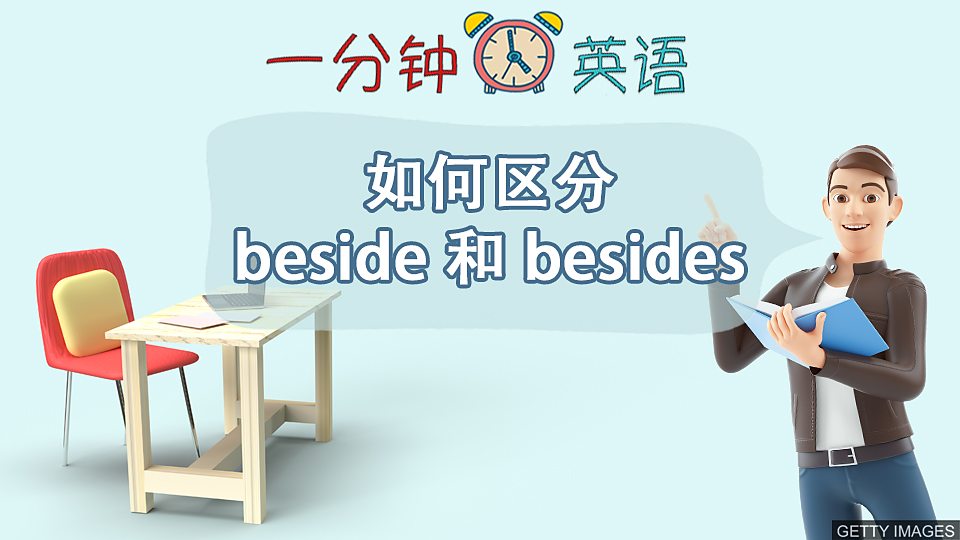内容简介
虽然 “beside” 和 “besides” 在拼写上只差一个字母 “s”,但它们的意思和用法却完全不同。它们的不同点具体是什么?在本期 “一分钟英语” 视频中,主持人 Phil 介绍这两个看似相近,实则不同的词语的用法。
文字稿
Hi, I'm Phil, and I'm going to tell you the difference between beside and besides.
That's one small letter, but it's quite a big difference.
Beside (with no 's') is a preposition, and we usually use it to talk about physical position.
So you can say: Put the chair beside the table.
Or: Come and sit beside me.
It's like a more formal version of 'next to'.
Now, besides (with an 's') is either a preposition or an adverb, and is often used to add information.
Besides knowing grammar well, you need to have a good vocabulary.
You should do something else besides studying.
Here, it's like 'as well as'.
As an adverb, it's often used to add a more important or stronger point.
I'm going to practise now because I've got time and besides, I need to!
It's like a less formal version of 'moreover'.
So, besides remembering that beside is for physical position, remember that besides is for adding information.
用法总结
1. “Beside” 是介词,表物理方位 “在…旁边”,相当于更正式一点的 “next to”。
-
Put the chair beside the table.
-
Come and sit beside me.
-
The cinema is beside the park.
2. “Besides” 作介词用时,意思为 “除了…之外,还/且”,类似于 “as well as”。
-
Besides knowing grammar well, you need to have a good vocabulary.
-
You should do something else besides studying.
-
Besides enjoying reading, she loves playing football.
3. “Besides” 作副词用时,意思为 “此外,况且”,通常用来添加更重要或更强烈的观点,相当于不那么正式的 “moreover”。
-
I'm going to practise now because I've got time and besides, I need to!
-
I want to go and lie down. Besides, I have a headache.
-
I don't want to drive now. Besides, it's really dark.


 3342次下载
点击下载
3342次下载
点击下载
 2621次下载 点击下载
2621次下载 点击下载
 4734次下载 点击下载
4734次下载 点击下载
 1854次下载 点击下载
1854次下载 点击下载
 1391次下载 点击下载
1391次下载 点击下载
 1391次下载 点击下载
1391次下载 点击下载











